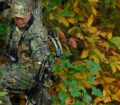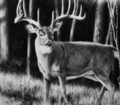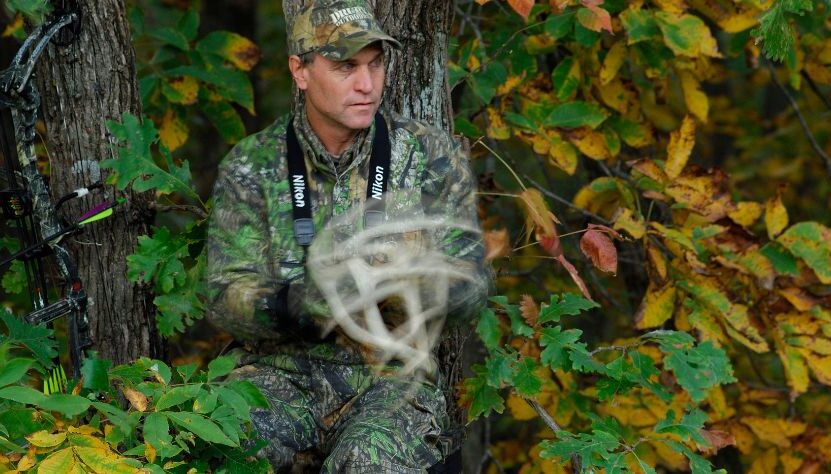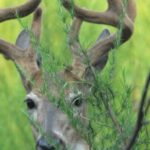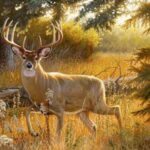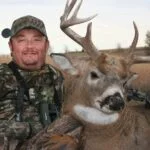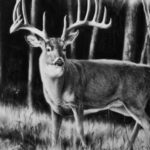Editor’s Note: Eddie Salter of Brewton, Alabama, began hunting at a very young age. Salter started calling turkeys competitively in 1981 and has amassed an impressive list of titles, including two World Open Turkey Calling Championships. He’s known nationally for his deer-hunting prowess and has starred on many outdoor TV shows and in numerous videos. This week Salter discusses tactics for taking deer.
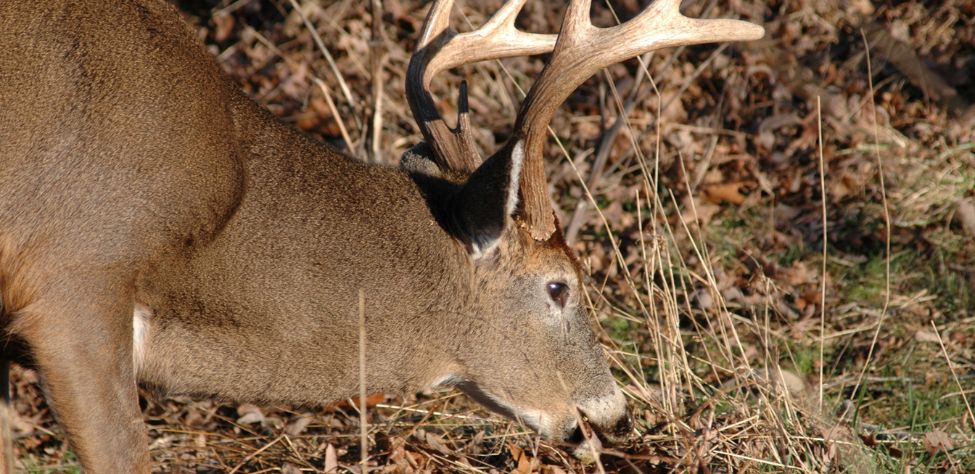
Why should you bowhunt during gun season? The gun hunter is the best friend a bowhunter ever will have because the gun hunter helps to shrink the woods. Let me explain. A gun hunter usually carries binoculars and a riflescope. The gun hunter can shoot from 100 to 250 yards from his stand. Therefore, the more property he can see, the better his odds are for taking a buck – or at least that’s what he thinks. For this reason, gun hunters hunt more open woods where they can see more deer.
But bowhunters know the fewest number of hunters, and the places that get the least amount of hunting pressure will be in the areas where the hunters can see 50 yards or less. The bowhunter doesn’t need to see more than 50 yards because most of his shots will be at 30 yards or less. Therefore, often, gun hunters drive deer to the bowhunters hiding in thick places. Most deer on any piece of property during the gun season have to stay in those thick places to survive. For this reason, bowhunters may have better chances of taking older-age-class bucks during gun season than in bow season. If you want to increase your odds of taking big bucks, bow hunt in thick areas during gun season, especially in areas with much hunting pressure.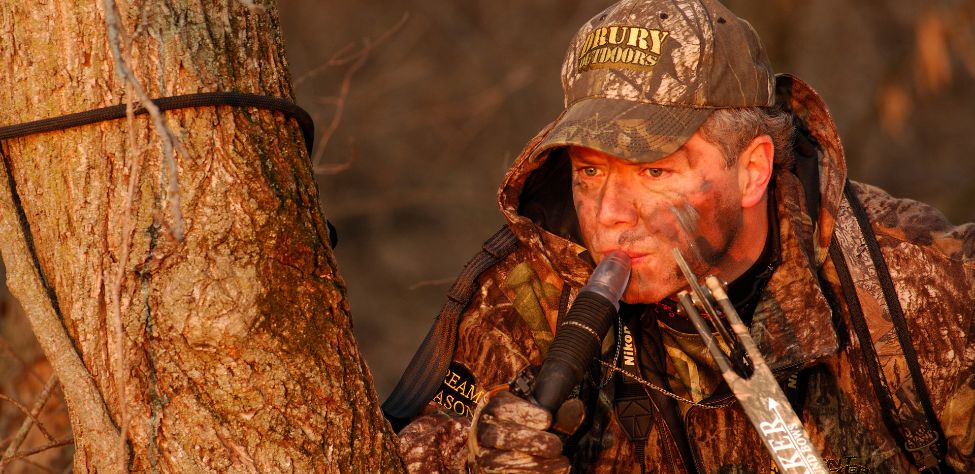
Connect With the Bucks You Want to Take
Although I bowhunt during gun deer season, the point of bowhunting is more than just taking a deer. I enjoy getting inside a deer’s head and figuring out how to make him come to me. I like to reel him close where I can take him with my bow. If I accomplish that feat, I’ve done more than take the deer. I’ve made that deer come to me.
I can’t help it; I’m a caller whether I’m calling for deer, turkeys, ducks, or predators. I like to make the animals that I harvest interact with me. To take a deer at 100 to 200 yards without ever introducing myself isn’t nearly as much fun as making that deer come in close where I can take him with my bow. I consider calling deer a challenge. Being able to influence the movement patterns of a deer is as big a part of deer hunting for me as actually taking the deer. This is one of the reasons I prefer to bowhunt during gun deer season.
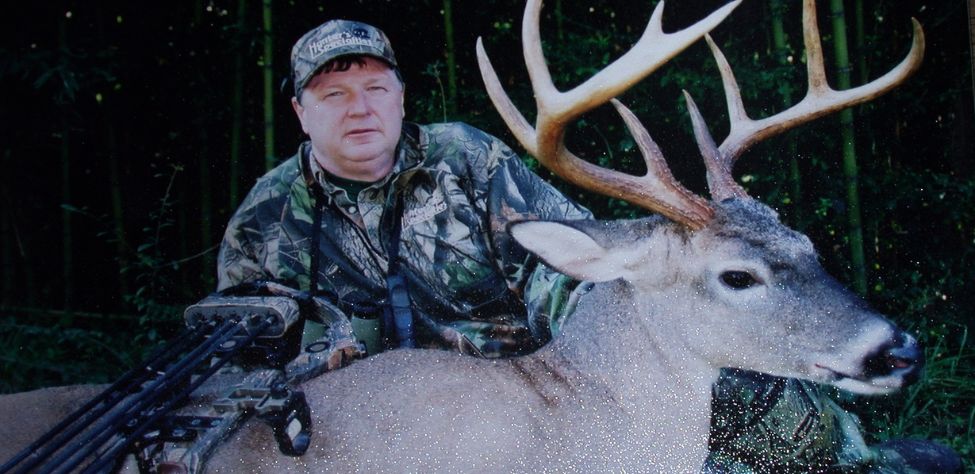
Use Turkey-Hunting Strategies to Take Deer with Your Bow During Gun Season
Another reason I bowhunt during deer season is that I have the heart of a turkey hunter. I like to hunt deer, but I also love to hunt turkey. One of the reasons I like deer hunting so much is that I can use most of the same strategies I use for calling turkeys in the spring to call deer in the fall. When I’m turkey hunting, I’ll try to call like a Jake or another gobbler to challenge an old gobbler to a fight. When deer hunting, I often challenge an older buck by grunting aggressively or rattling at him. Also, during gun season, I call deer like I call turkeys in that when I’m trying to get a turkey to come in, I’ll use some sweet-talking, high-pitched hen calls to get an old gobbler to meet me, who he thinks is the hen. When calling bucks during gun season, I’ll use doe bleats, fawn bleats, and high-pitched doe sounds to call in a buck. However, just like you can overcall to a turkey, you also can overcall to a deer. Once a buck comes to your calls, shut up, and let him come to you.
I like to bowhunt during gun deer season. I know that gun hunters put more deer in front of me at this time of year, and I can continue to use all my calling tactics to hunt the way I want to hunt. Maybe I’m like the salmon swimming downstream while the gun hunters are all salmon swimming upstream. I’ve learned that when you use different tactics than those used by other hunters, often you take the bucks that others will never see. If you like to bowhunt, don’t think you must lay down your bow during gun deer season. You may be more effective with your bow in taking big bucks than you have been during the archery-only season.
Expert Guidebooks on BowHunting Deer: Best Sellers
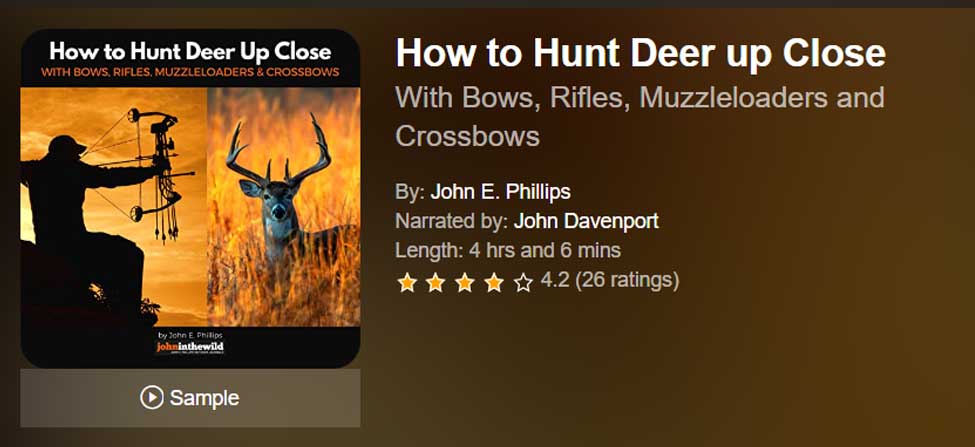
How to Hunt Deer Up Close with Bows, Rifles, Muzzleloaders and Crossbows
To be more successful as a deer hunter, learn all you can about the animal, the wind, the temperature and the techniques required to get in close.
In this book, you’ll hear about some of the best hunters in the nation who know how to hunt deer close, including one of the greatest archers who ever lived, Howard Hill.
John E. Phillips also shares his own deer stories and hunting tips from 50 years of experience.
VERSIONS: AUDIBLE, KINDLE & PRINT
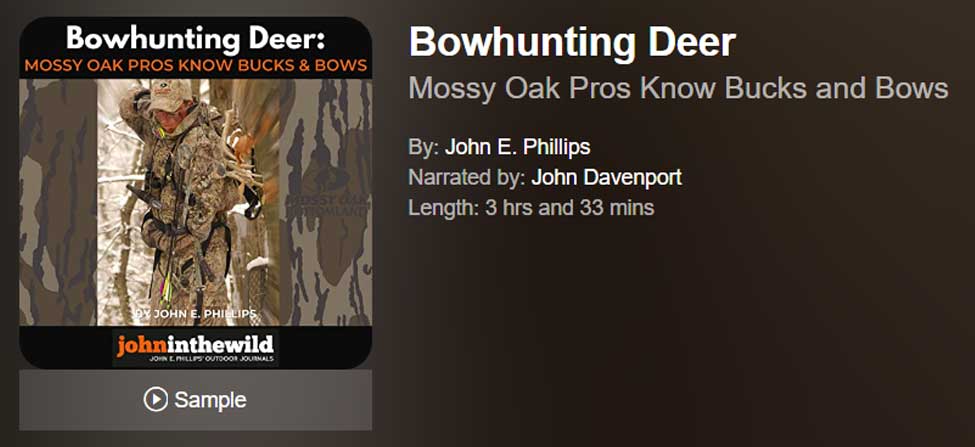
Many deer hunters have told me: “I want a deer-hunting book with regular hunters who are just like me” and “I want a deer-hunting book with the best advice from the best professional deer hunters in the nation”.
Mossy Oak’s Pro Staff is made up of some of the nation’s best deer hunters, professional deer hunters, and TV hosts whose names and advice often are heard in deer camps all over the nation. But many of the more than 1,000 Mossy Oak Pro Staff hunters are everyday, weekend, and vacation deer hunters just like you.
Whether you hunt private or public lands, you’ll find tips and tactics in this book from the Mossy Oak Pro Staff that will increase your odds for locating and taking the bucks of your dreams.
If you’re serious about learning to hunt and take deer with a bow, if you’re looking for a different strategy that will help you identify and harvest big bucks, if you want to learn from your misses as well as from the shots that connect, and if you enjoy being in the great outdoors that the Good Lord has blessed us with, then this book is for you.
VERSIONS: AUDIBLE, KINDLE & PRINT

How to Hunt and Take Big Buck Deer on Small Properties
In this book, you’ll hear from 14 hunters who either have gained permission or leased properties as small as six acres to as much as 250 acres, and how they consistently take older-age-class bucks off these little lands.
VERSIONS: AUDIBLE, KINDLE & PRINT

Jim Crumley’s Secrets of Bowhunting Deer
Using a black magic marker and a gray work jumpsuit, Jim Crumley of Buchanan, Virginia, drastically changed the nature and purpose of hunting camouflage when he created the first sportsman’s camouflage – Trebark. Crumley’s love of bowhunting and his desire to be more invisible changed hunting clothing forever.
In this hunting guide, he shares the wisdom that he’s learned throughout his lifetime about how to be a hunter, how to find a deer lease, how to scout for deer, and more.
Special features include how to:
- Have a magic 60 acres to hunt
- Decide the best equipment to use
- Find deer year-round
- Locate land to hunt
- Know the best place to put your tree stand
- Get bucks within bow range
VERSIONS: AUDIBLE, KINDLE & PRINT

How to Hunt Deer Like a Pro
How do you know if the land you hunt has a trophy deer on it? Wildlife manager Bob Zaiglin, of Uvalde, Texas and Jim Crumley, the father of modern-day hunting camouflage, tells you how to find out. GPS can make finding and taking that trophy buck easier. This hunting guide will teach you how to hunt big bucks where no one else can find them, how to call deer, and how to become versatile as a deer hunter, so that if one deer tactic doesn’t work, another one will.
In the chapter, “How to find Bucks at Scrape,” Dr. Keith Causey, retired professor of Wildlife Science at Auburn University, describes the best way to hunt a scrape.
Brad Harrison of Neosho, Missouri, is a nationally-known videographer, professional deer hunter and master at calling deer. Another master is Will Primos of Primos Game Calls. These two experts will tell the best deer calls and when to use them in this book.
And for over 20 years, Bo Pitman, lodge manager of White Oak Plantation, has been studying deer movement patterns. He explains what types of conditions are best for predicting deer movement.
VERSIONS: AUDIBLE, KINDLE & PRINT

Deer hunting and deer hunters are drastically changing each year. To learn new techniques for hunting deer and have more places to hunt, I’ve interviewed some of the best deer hunters in the nation and share their tactics in How to Hunt Deer Like a Pro: Volume II.
In Chapter 10, Jacob Lamar tells you his tactics for consistently taking older-age-class bucks on public lands in several states. Chapter 11, Bob Walker explains how to find places on public lands where you can hunt that 99 percent of the other hunters never have considered hunting. The Bonus Chapter with David Ramey tells you how, where, when and with what equipment to take big Kansas bucks on public lands by hunting in 100-degree weather when others won’t hunt.
Chapter 13, Mark Drury, his family and his guests take mature bucks every season by having more small places to hunt rather than one large property. Drury explains the strategy of having satellite farms to hunt that only may be 50-150 acres each or less. Chapter 15, Pat Reeve, who hunts far-northern states and Canada, says, “I don’t like hunting for mature bucks until the weather is 20 degrees or less.” Chapter 4, Dr. Larry Marchinton says that funnels are the most-reliable stand sites to hunt for big bucks and tells why.
VERSIONS: AUDIBLE & PRINT

